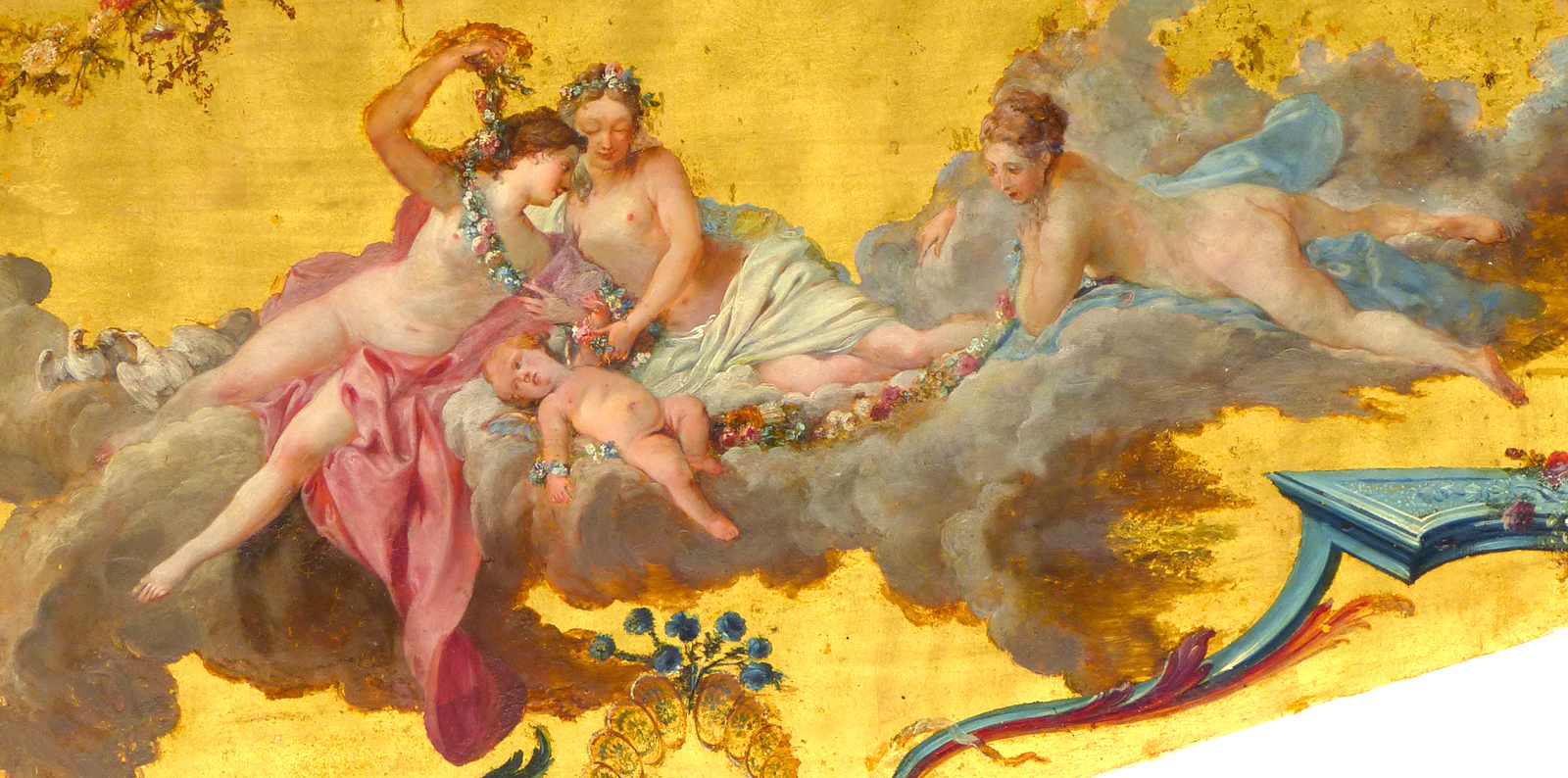Franco-Flemish double-manual harpsichord,
![]()
The painting of
the outside of the lid of
the Franco-Flemish harpsichord

The outside of the lid has been decorated by only one artist, who did both the figure paintings as well as the the ornamental decorations around these. Both of these have been reliably attributed to François Boucher, Paris, 1750. These show Venus and her attributes on the top of the lid flap on the left, and Flora, Cupid and Juno on the right-hand main lid. The figure of carnal love on the right, is somewhat later and probably not by Boucher.
![]()
Venus and Cupid with their attributes. Venus herself represents the embodiment of love and sexuality. The Cupid is the God of desire, often portrayed as here, and as the son of Venus. The bow and quiver full of arrows represent Venus and Cupid's power in the victory of love. The scallop shell chariot rolls on golden wheels, and Venus rests on a soft pillow with a tassel. Two loving doves, a stock-in-trade of François Boucher, also representing pure love, coo sweetly and kiss below her.
The face painted on this figure is almost certainly that of Mme de Pompadour (see a further explanation elsewhere on this site).
![]()

A detail of the painting on
the outside of
the main lid showing Flora, Juno, a putto, and a reclining nude
These paintings, of an exceptionally high quality, have been attributed to François Boucher, Paris, 1750. For a discussion of the added figure of Marie-Louise O'Murphy on the right above, click here.
